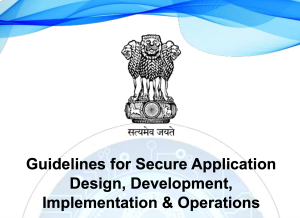
The login functionality is a critical component of any application or system, as it serves as the primary gateway for users to access sensitive information and perform various actions. However, this critical functionality is also prone to security vulnerabilities that can expose user accounts and sensitive data to unauthorized access. In this blog post, we will explore some of the common security issues found in login functionalities and discuss best practices to mitigate these risks.
- Weak Password Policies: One of the most prevalent security issues is weak password policies. This includes allowing users to set weak or easily guessable passwords, not enforcing password complexity requirements, or failing to implement measures such as password expiration and account lockouts. These weaknesses can make it easier for attackers to compromise user accounts through brute-force attacks or password guessing techniques.
Best Practice: Implement strong password policies that require a combination of uppercase and lowercase letters, numbers, and special characters. Enforce password complexity requirements, set password expiration periods, and implement mechanisms to lock user accounts after multiple failed login attempts.
- Insecure Authentication Mechanisms: Inadequate authentication mechanisms can lead to security breaches. Examples of insecure practices include storing passwords in plain text or weakly hashed formats, transmitting sensitive authentication data over unencrypted connections, or relying solely on single-factor authentication without additional layers of security.
Best Practice: Store passwords securely by using strong cryptographic hashing algorithms and adding salts to prevent rainbow table attacks. Implement secure communication protocols (e.g., HTTPS) to encrypt data in transit. Consider implementing multi-factor authentication (MFA) to add an extra layer of protection.

- Lack of Account Lockouts and Brute-Force Protection: Failure to implement account lockout mechanisms and protection against brute-force attacks can make login functionalities vulnerable to automated attacks. Attackers can repeatedly attempt to log in using various credentials until they find a valid combination.
Best Practice: Implement account lockout mechanisms that temporarily lock user accounts after a certain number of failed login attempts. Additionally, consider implementing CAPTCHA or rate-limiting mechanisms to detect and block suspicious login attempts.
- Inadequate Session Management: Insecure session management can lead to session hijacking, where attackers gain unauthorized access to a user’s active session. This can occur when sessions lack proper expiration times, do not use secure session identifiers, or fail to invalidate sessions after logout.
Best Practice: Implement session management techniques such as setting session expiration times, using secure session identifiers that are resistant to session fixation attacks, and ensuring sessions are invalidated upon logout or after a period of inactivity.
- Insufficient Input Validation: Insufficient input validation can enable attackers to exploit login functionalities through various techniques such as SQL injection, cross-site scripting (XSS), or command injection. Failing to sanitize and validate user input can allow malicious code or unauthorized commands to be executed.
Best Practice: Implement robust input validation by employing secure coding practices and using input validation libraries or frameworks. Sanitize and validate user input to prevent the execution of malicious code or unauthorized actions.

Login functionalities are prime targets for attackers seeking unauthorized access to sensitive information. By understanding and addressing the common security issues outlined in this blog post, organizations can fortify their login mechanisms and protect user accounts and sensitive data from potential breaches. Implementing best practices, such as enforcing strong password policies, implementing secure authentication mechanisms, and addressing session management and input validation, will significantly enhance the security of login functionalities and contribute to a more secure overall system or application.





